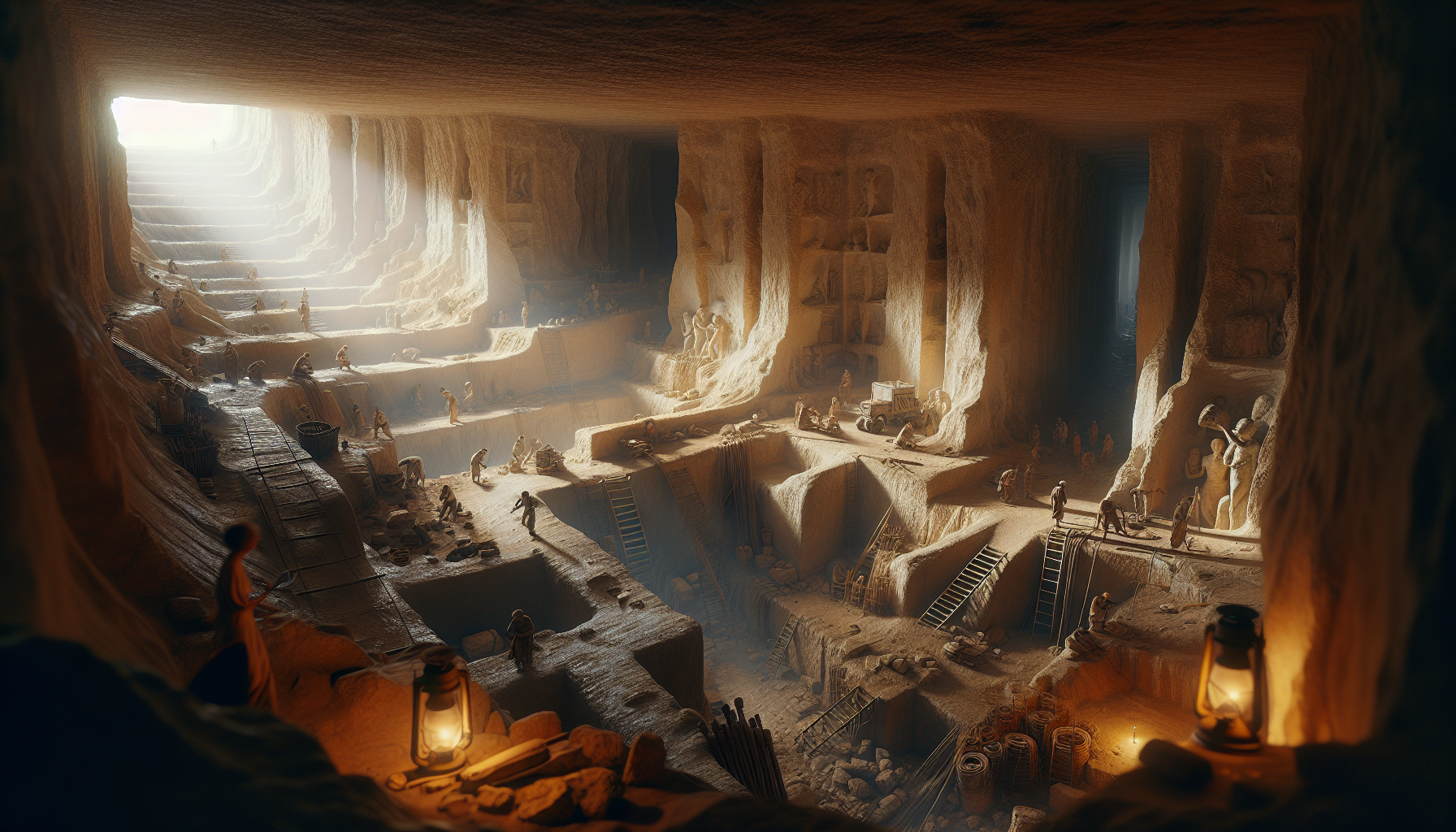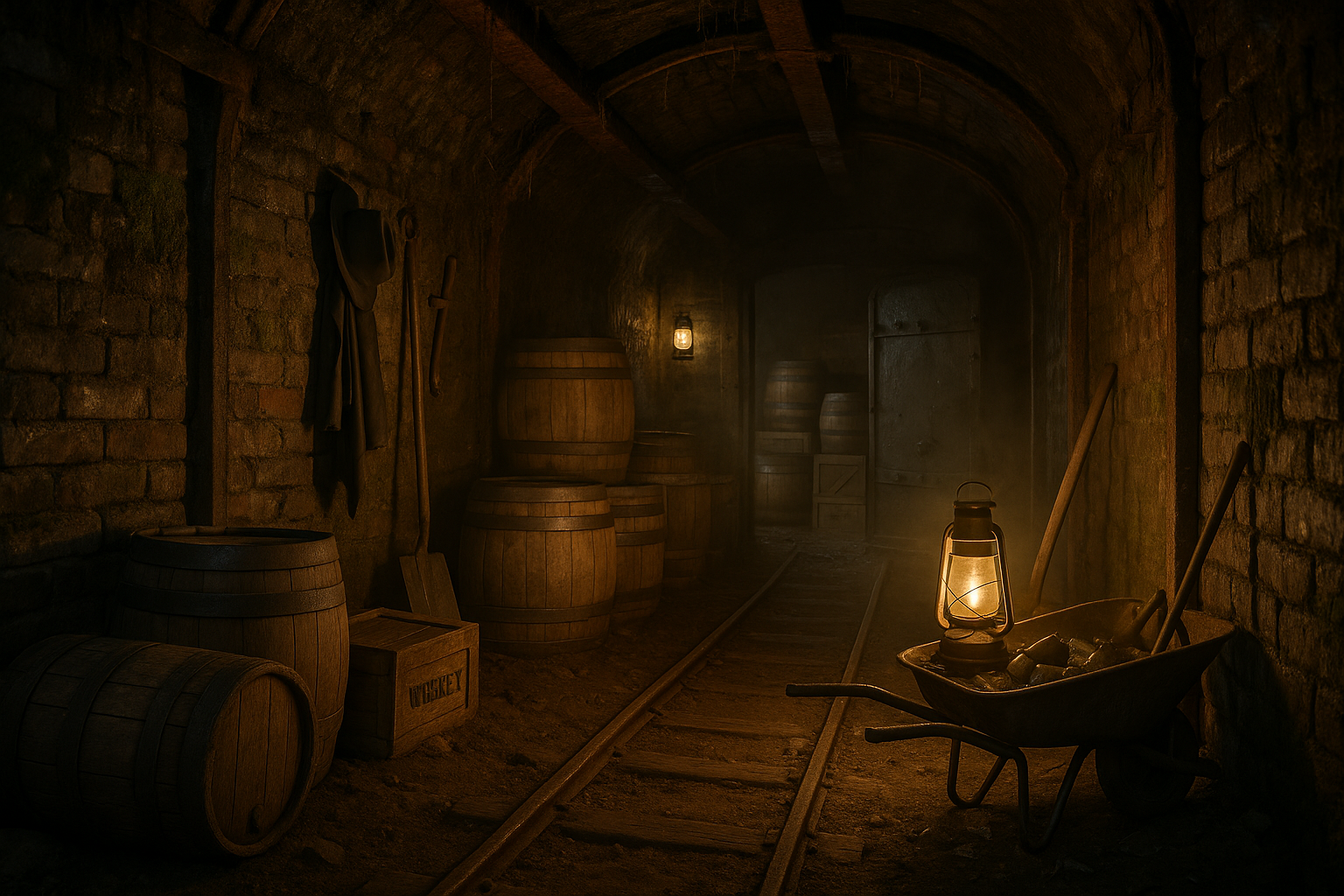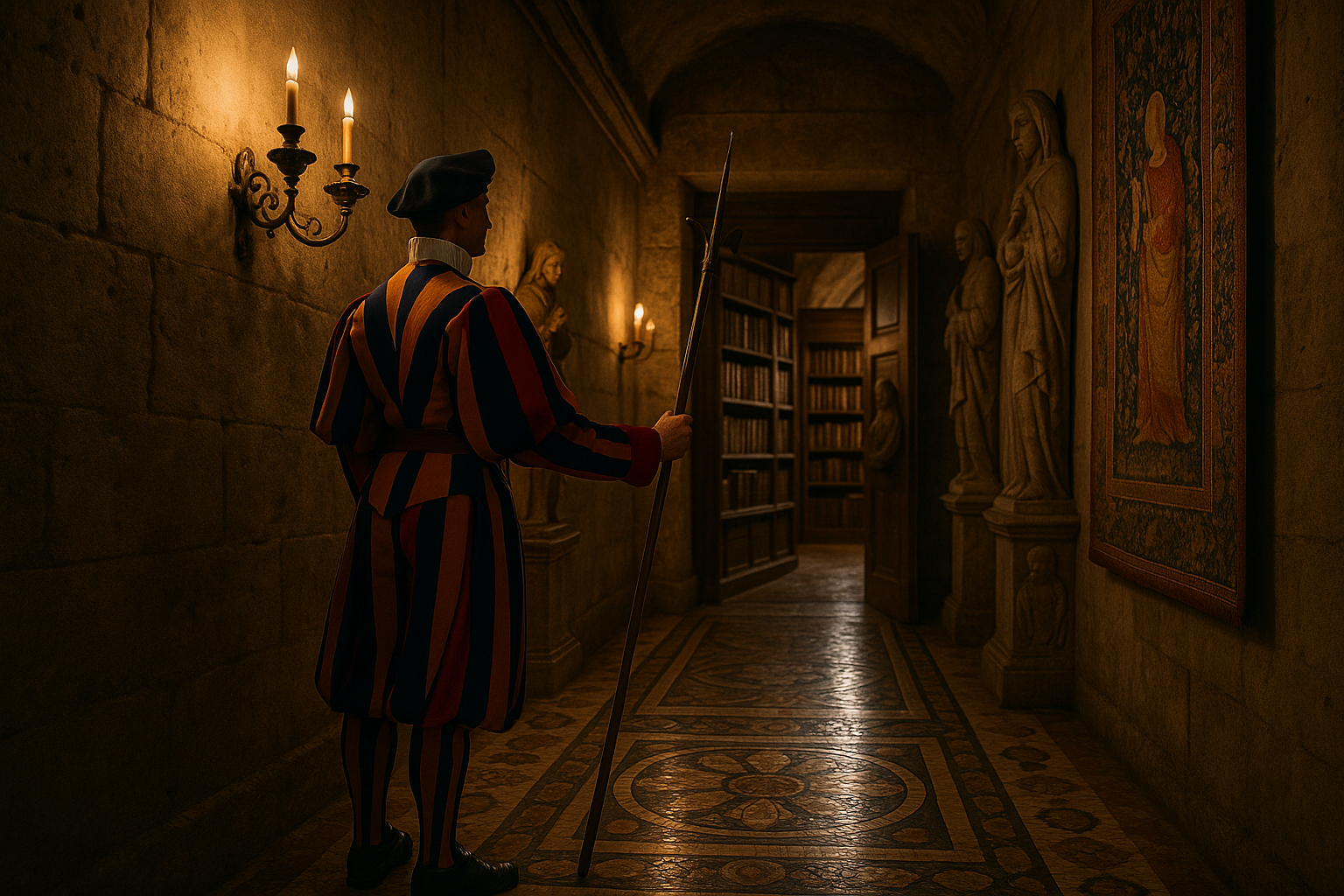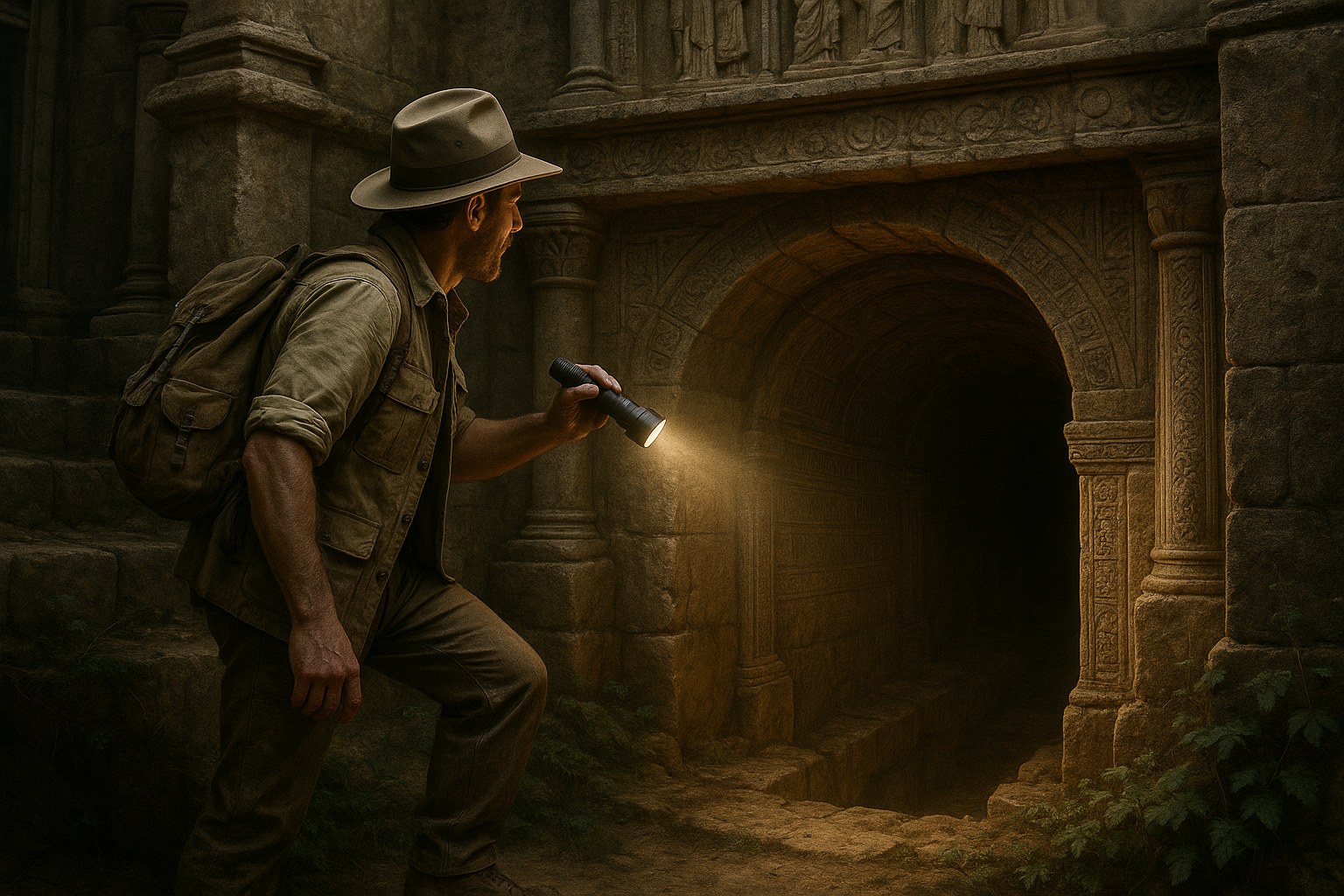Throughout history, the earth beneath our feet has harbored secrets waiting to be uncovered, whispering tales of civilizations long past. As we delve into the hidden realms of ancient societies, we find ourselves standing at the threshold of understanding the astonishing ingenuity behind their underground constructions. From the enigmatic catacombs of Rome to the mysterious subterranean cities of Cappadocia, these architectural marvels compel us to ask: what drove these ancient peoples to carve their worlds beneath the surface? In this exploration, we will unravel the fascinating reasons behind these underground creations, illuminating the complex tapestry of cultural, practical, and spiritual motives that inspired such endeavors.
Imagine stepping back in time to a world where the ground itself became a canvas for human expression and survival. The underground structures of ancient civilizations were not mere follies of architectural curiosity; they were born from necessity, innovation, and an intrinsic connection to the earth. These subterranean environments offered refuge from harsh climates, provided strategic advantages in warfare, and served as sacred spaces for spiritual rituals. Each underground construction was a testament to the resilience and adaptability of its creators, reflecting a profound understanding of their environment and a sophisticated application of available resources. As we peel back the layers of time, we begin to appreciate how these underground worlds were as vibrant and complex as the societies that built them.
In this article, we will embark on a journey through time and space, examining the diverse reasons that led ancient civilizations to look below the surface. We will explore how environmental challenges, such as extreme weather conditions and scarcity of resources, prompted innovative underground solutions. Additionally, we will uncover the strategic military advantages these structures provided, offering insights into the defensive tactics employed by ancient societies. Beyond the practical, we will delve into the spiritual and cultural significance of subterranean spaces, where rituals, burials, and ceremonies connected communities with their ancestors and the divine. These underground sanctuaries were not merely shelters; they were profound expressions of belief and identity.
Join us as we unearth the secrets of the past, piecing together the stories of civilizations that dared to think below the surface. Through archaeological discoveries, historical analyses, and modern interpretations, we will illuminate the motivations behind these underground constructions and reveal their enduring legacy. By understanding the ingenious reasons that prompted ancient peoples to build beneath the earth, we gain not only a deeper appreciation for their architectural achievements but also a broader perspective on human innovation and resilience. As we descend into the depths of history, we invite you to explore the ingenious world of underground construction and uncover the timeless lessons it offers us today. 🌍✨
The Historical Context of Underground Construction
The construction of subterranean structures is a phenomenon that has intrigued archaeologists and historians for centuries. Ancient civilizations, from the Egyptians to the Mayans, built impressive underground constructions that continue to baffle modern experts. These enigmatic structures often served diverse purposes, ranging from religious and ceremonial uses to practical functions such as storage and defense.
One of the primary reasons ancient civilizations opted for underground construction was the climate. In regions with harsh weather conditions, subterranean spaces provided a stable environment. Temperatures underground remain relatively constant, offering shelter from the scorching heat or chilling cold. For instance, the underground dwellings of the Anasazi people in the American Southwest provided refuge from extreme desert temperatures, showcasing how ancient architects leveraged natural resources to create habitable spaces.
Furthermore, religious and spiritual beliefs played a significant role in the decision to build below the surface. Many cultures viewed the underground as a sacred realm, a place of mystery and divine connection. The Hypogeum of Ħal-Saflieni in Malta, a prehistoric subterranean temple, exemplifies this spiritual use. It was likely used for rituals and ceremonies, emphasizing the symbolic importance of descending into the earth to commune with deities or ancestors.
Technological Ingenuity in Ancient Underground Construction
The engineering prowess required to construct these underground marvels is nothing short of remarkable. Ancient builders had to overcome numerous challenges, such as ensuring structural stability and ventilation. The need for light and air in subterranean spaces necessitated innovative solutions, which were achieved without the aid of modern technology.
For instance, the intricate tunnel systems of the ancient Cappadocian region in Turkey highlight the sophistication of ancient engineering. These tunnels, carved into volcanic rock, extend for miles and include complex ventilation systems that allowed air to circulate throughout the underground city. The strategic design ensured that inhabitants could live comfortably, protected from invaders and environmental elements.
In terms of tools and techniques, ancient builders often utilized simple but effective methods. By employing rudimentary tools, such as chisels and hammers, they could carve out vast subterranean spaces with precision. The alignment of these structures with astronomical events also indicates a deep understanding of mathematics and astronomy. The underground tombs in the Valley of the Kings in Egypt, for example, were meticulously planned to align with specific stars and constellations, reflecting the Egyptians’ advanced knowledge and their desire to honor their gods and the afterlife.
The Multifaceted Purposes of Underground Structures
The purposes behind these ancient subterranean constructions were as varied as the cultures that built them. From offering protection against natural and human threats to serving as places of worship and burial, the underground served numerous roles in ancient societies.
One primary function of underground structures was defensive. By constructing their homes and cities below the surface, civilizations could better protect themselves from invaders. The Derinkuyu underground city in Turkey, capable of housing thousands of people, served as a refuge during times of war. Its design included intricate passageways and booby traps to deter enemies, illustrating the strategic advantages of subterranean construction.
Additionally, these underground spaces often acted as storage facilities. In the arid climates of the Middle East, for example, underground granaries were built to protect crops from spoilage and pests. The stable temperature and humidity levels underground made it an ideal location for preserving food, ensuring a reliable food supply in times of scarcity.
Religious and ceremonial purposes were also a significant driver of underground construction. The Catacombs of Rome, for instance, served as burial sites and places of worship for early Christians. These subterranean labyrinths provided a hidden sanctuary for religious practices, away from the prying eyes of Roman authorities. The symbolism of descending into the earth to reach the divine or connect with the deceased was a powerful aspect of many ancient religions.
Cultural Symbolism and the Underground
The underground world held profound cultural significance for many ancient civilizations. It was often associated with the afterlife and the underworld, realms inhabited by gods, spirits, and the deceased. This symbolic connection added a layer of spiritual meaning to the construction and use of subterranean spaces.
In Mesoamerican cultures, such as the Maya, the underworld, known as Xibalba, was an integral part of their cosmology. The descent into the underworld was seen as a journey of transformation and rebirth. The labyrinthine structures of the Mayan civilization, with their hidden chambers and passageways, reflect this cultural symbolism. These underground spaces were often used for rituals aimed at appeasing gods and ensuring the continuation of cosmic order.
Similarly, in ancient Greece, the concept of the underworld was central to their religious beliefs. The Eleusinian Mysteries, secretive religious rites held annually, involved a symbolic descent into the earth. Participants believed that through these rituals, they could gain insight into life after death and achieve a closer connection to the divine. The underground theaters and temples associated with these mysteries highlight the cultural importance of subterranean spaces in Greek society.
The Enduring Legacy of Underground Construction
The legacy of ancient underground construction is a testament to human ingenuity and the ability to adapt to diverse environmental and cultural challenges. These structures continue to captivate our imagination, offering a glimpse into the innovative minds of our ancestors.
As we navigate the complexities of the modern world, revisiting the past provides valuable lessons in sustainability, resilience, and the creative use of available resources. By understanding the motivations and techniques behind ancient subterranean construction, we can apply these insights to contemporary challenges, ensuring a harmonious balance between human needs and environmental preservation.
For those interested in further exploring this topic, consider visiting some of these ancient sites to experience firsthand the awe-inspiring achievements of past civilizations. Whether it’s the intricate tunnels of Cappadocia or the sacred chambers of the Hypogeum, these underground wonders continue to inspire and educate, reminding us of the rich tapestry of human history that lies just beneath the surface.

Conclusion
In conclusion, the exploration of ancient civilizations and their ingenious use of underground construction opens a fascinating window into human ingenuity and adaptability. Throughout this article, we’ve delved into the motivations and methods that drove these civilizations to dig deep beneath the surface. From the subterranean cities of Cappadocia to the intricate tunnel networks of the Mayans, each instance of underground construction reveals a story of innovation, survival, and cultural sophistication.
Initially, we examined the practical reasons for underground construction. Protection from environmental elements, including extreme temperatures and natural disasters, was a primary motivator. The subterranean dwellings offered a stable climate, shielded from the scorching sun or chilling winds. This practical aspect underscores a deep understanding of environmental management and resource optimization. In modern times, this can inspire us to rethink sustainable architectural practices and how we might integrate ancient wisdom into contemporary design.
Next, we explored the strategic and defensive purposes these constructions served. Many underground structures were created to protect against invasions and conflicts. Their hidden nature provided a tactical advantage, ensuring the safety and continuity of communities during tumultuous times. This aspect of ancient engineering highlights the strategic foresight and collective efforts invested in community preservation. Today, these lessons in strategy and foresight are applicable not just in defense, but in planning resilient urban environments and infrastructure that can withstand modern challenges.
Religious and cultural significance also played a crucial role. For many civilizations, underground spaces were not merely shelters but sacred sites. They were places of worship, ceremonial activities, and cultural expression. This reveals a profound connection between spirituality and the environment, illustrating how physical spaces can reflect and reinforce cultural values. Modern architects and city planners might draw inspiration from this integration of space and spirituality, creating environments that reflect cultural identities and community values.
Moreover, the engineering techniques and materials used in these ancient constructions continue to inspire awe. Without modern technology, ancient builders achieved architectural feats that remain standing today. These achievements underscore a deep understanding of materials and physics, as well as the ability to organize and mobilize large groups of people. By studying these methods, contemporary engineers and architects can gain insights into sustainable building practices, particularly in the use of locally sourced materials and labor.
The exploration of ancient underground constructions is not just a journey into the past but a lens through which we can view the future. As we face global challenges such as climate change, overpopulation, and resource scarcity, these ancient solutions offer valuable lessons. They remind us of the importance of resilience, adaptability, and harmony with our environment.
By understanding and appreciating the ingenuity of our ancestors, we can find inspiration to innovate and solve the challenges of our time. These ancient practices encourage us to think creatively, to look beyond conventional solutions, and to consider how we might integrate ancient wisdom with modern technology to create sustainable futures.
We invite you, dear reader, to further explore this intriguing subject. Dive deeper into the mysteries of ancient civilizations and uncover more about their innovative solutions by visiting resources such as the Smithsonian Institution (https://www.si.edu/) or National Geographic (https://www.nationalgeographic.com/). These platforms offer a wealth of information and further reading that can enrich your understanding and appreciation of these historical marvels.
In closing, we encourage you to reflect on the lessons from ancient underground constructions. Consider how you might apply this knowledge in your personal or professional life. Whether it’s in architecture, engineering, urban planning, or another field, these insights can inspire innovative thinking and problem-solving.
Feel free to share this article with friends, colleagues, or anyone interested in the intersection of history, engineering, and culture. We also welcome your thoughts and insights—leave a comment and join the conversation. Let’s collectively unravel the secrets of the past and shape a more sustainable and innovative future together. 🌍✨
Toni Santos is a visual storyteller and artisan whose work explores the quiet power of what lies beneath. With a deep fascination for subterranean and hidden architecture, Toni uncovers the layers, voids, and forgotten spaces that shape our built environment from the shadows.
His art is a journey through the unseen — from ancient underground chambers to sealed passageways, service tunnels, and foundations buried in time. Each creation tells a story of silence, secrecy, and structure — revealing how absence and concealment can be just as meaningful as what’s visible above ground.
Whether working through visual compositions, architectural studies, or symbolic handcrafted pieces, Toni captures the soul of hidden spaces. His work bridges art and archaeology, blending design with discovery. Trained in visual design and traditional techniques, Toni creates with intention. His pieces don’t just depict — they interpret, inviting viewers to rethink what space, memory, and architecture mean when they’re hidden from view.
As the creative force behind Vizevex, Toni shares this perspective through curated visual narratives, symbolic collections, and interpretive essays that give voice to the quiet geometries beneath our feet.
His work is a tribute to:
The mystery of spaces built to be forgotten
The symbolism embedded in foundations, voids, and passageways
The timeless connection between human intention and hidden structure
Whether you’re an artist, an urban explorer, or someone fascinated by the unseen frameworks that support our world, Toni invites you into a realm where architecture becomes myth — one corridor, one layer, one buried story at a time.





